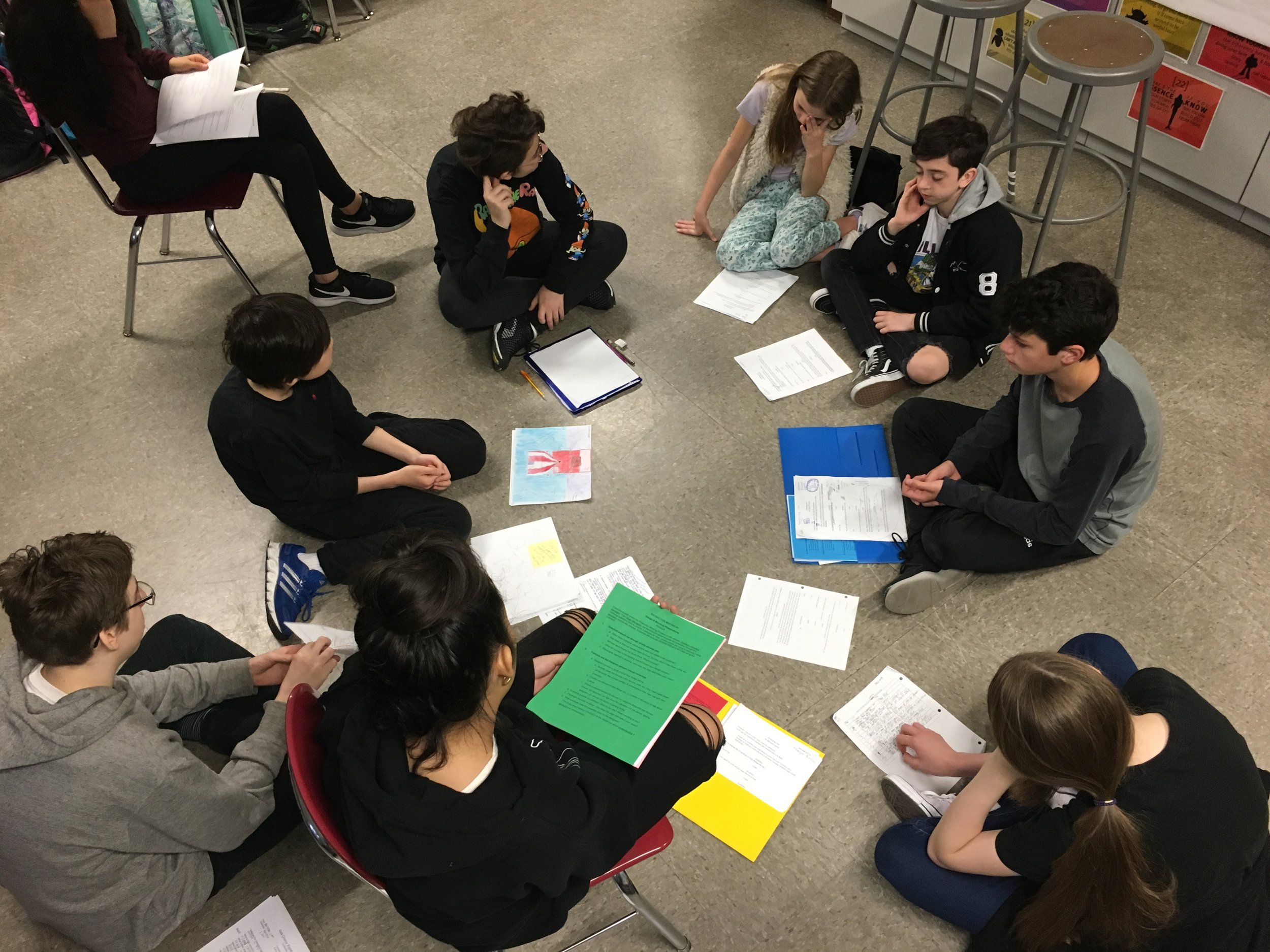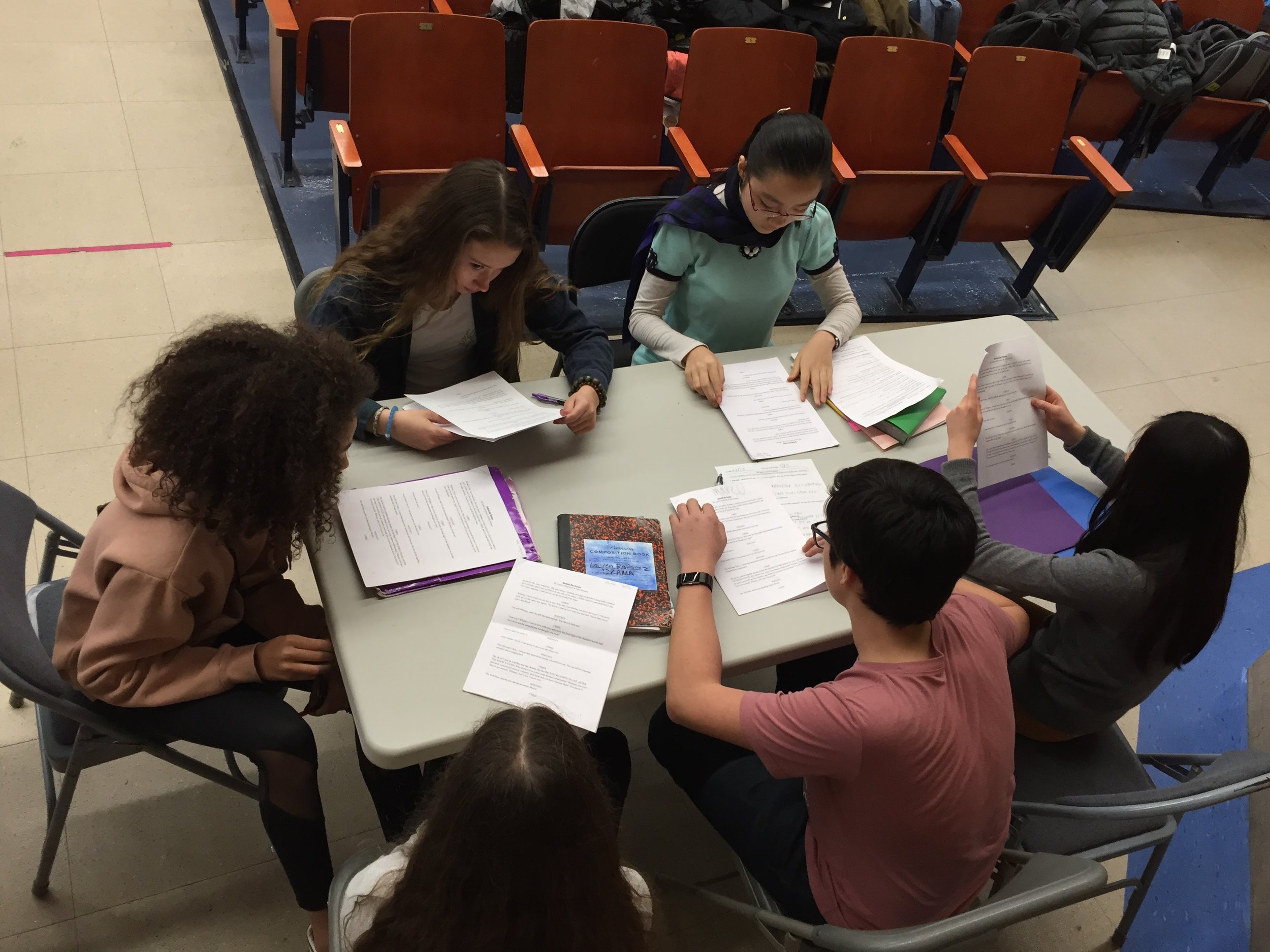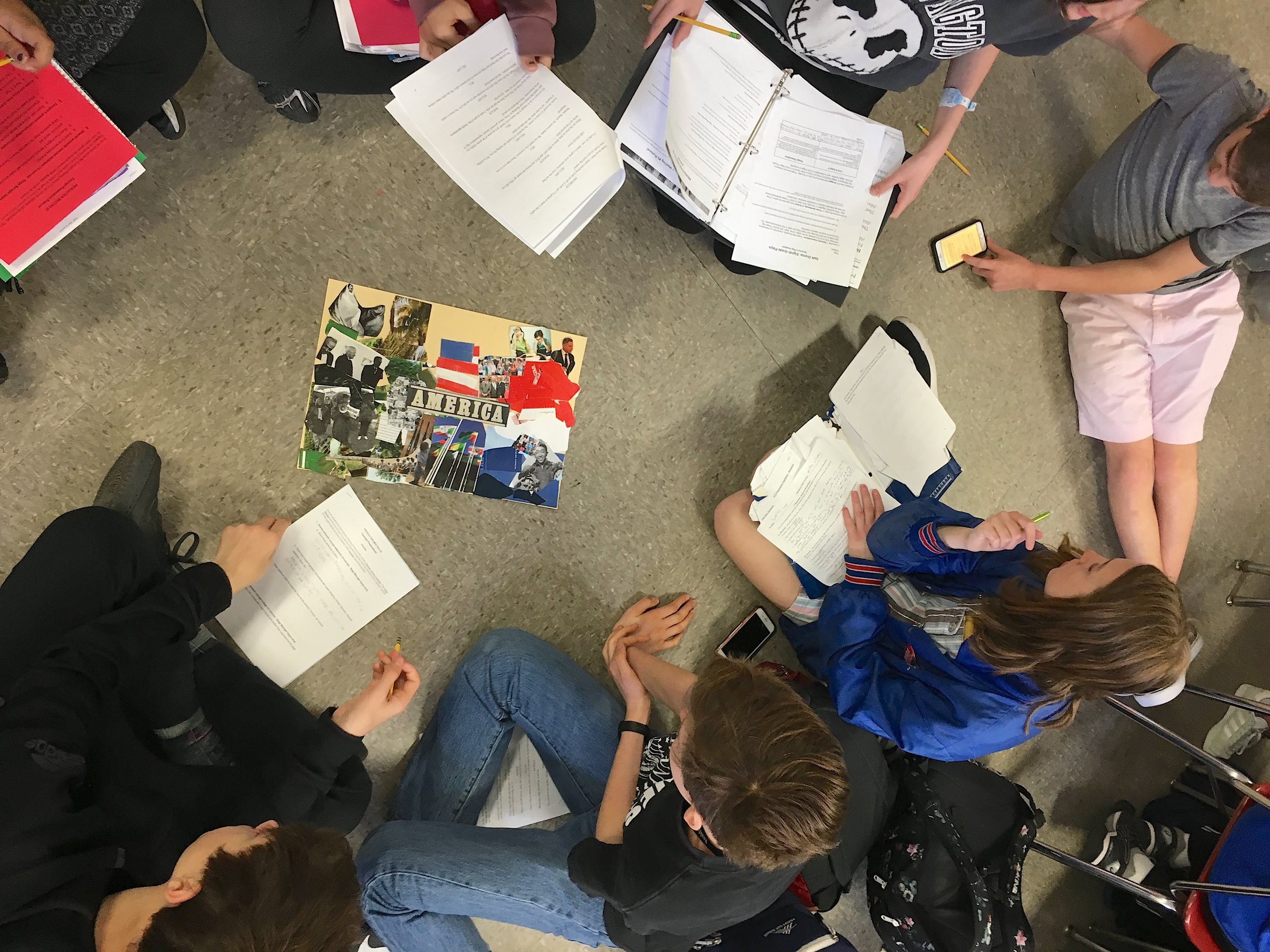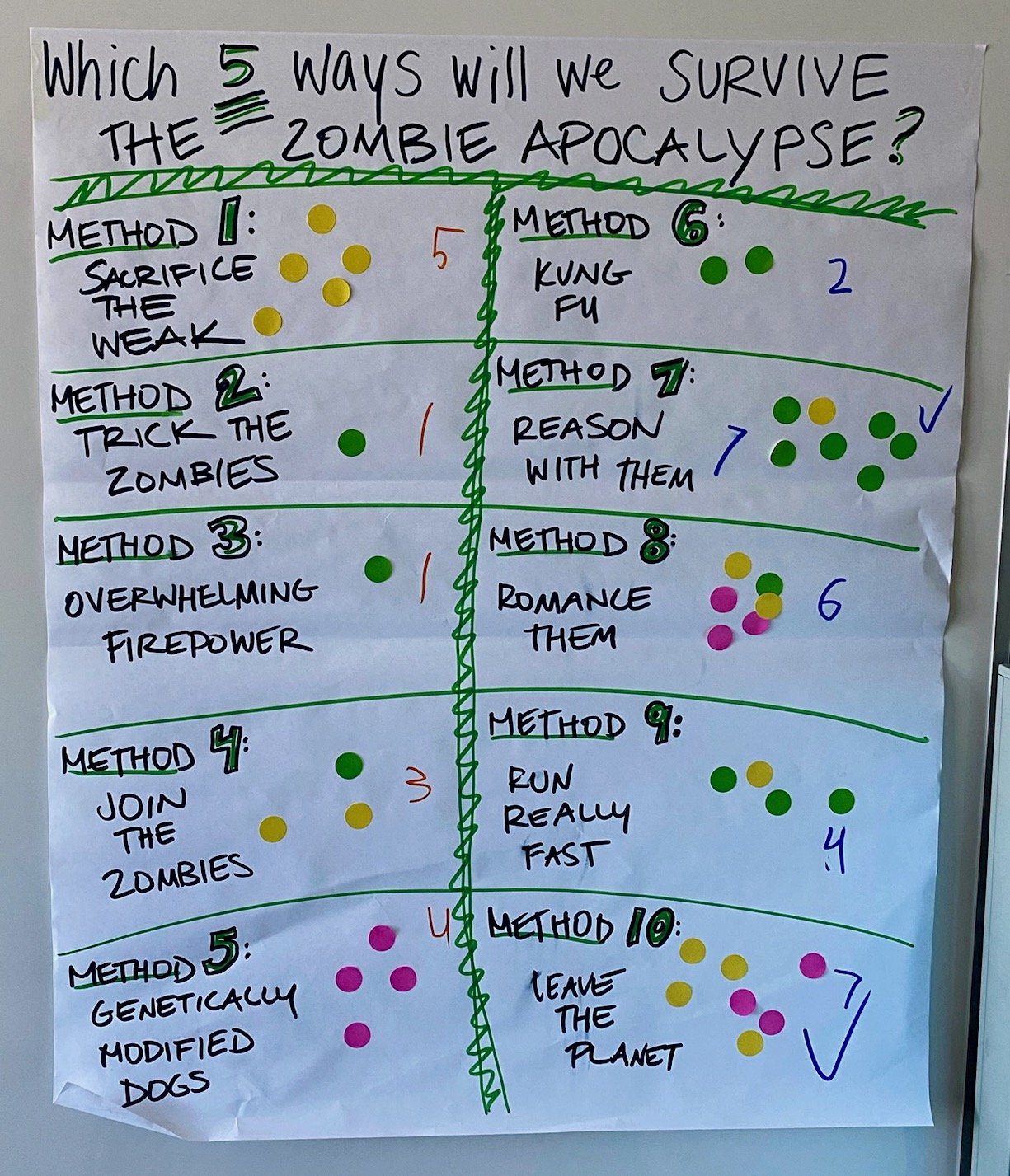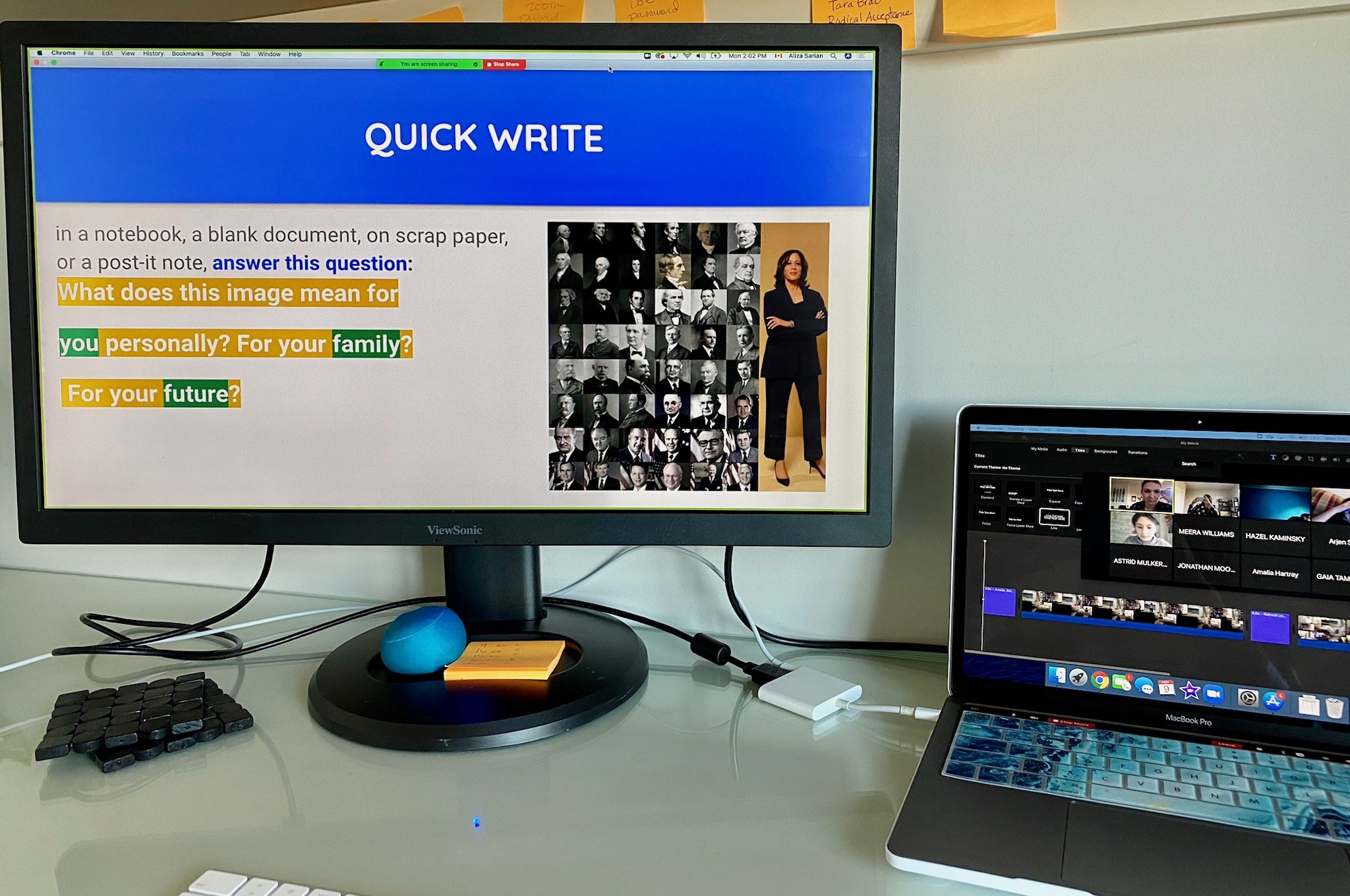expertise.
arts integration
Bringing the arts into a “core” classroom environment provides opportunities for access, engagement, and community among students. The benefits of the arts are substantial. Arts learning provides multiple access points for learners to process new material. It is tactile and a natural outlet for most students. (Kids want to move, create, and imagine!) Integrating the arts into the classroom allows it to permeate the halls of the school as well, creating a community of creativity that unites students, faculty, and families.
There are two key ways for the arts to be integrated in the classroom, at all grade levels:
1. Arts-Informed Integration. Designing lessons, activities, and projects that allow students to practice arts skills without prioritizing their mastery. Examples of this might be:
Designing a board game for the water cycle
Creating a TikTok video for Juliet in Romeo and Juliet
Composing a song that teaches a math formula
Drawing a picture book of a major historical event
2. Two-Way Arts Integration. In this next-level arts integration strategy, classroom teachers are introducing arts skills AND core content, teaching and assessing both equally. Examples of this might be:
Using locomotion (dance) to demonstrate the order of operations for a math equation
Designing a costume (theatre) for the protagonist of a novel
Retelling an historical event from the perspective of a figure from that time, utilizing dynamics (music) to emphasize the mood
Delineating various rock gradations using line (visual art)
The outcomes for students–increased engagement, literacy-learning, and development of social emotional skills-are unmistakable, and for teachers, all of these outcomes make their jobs easier. Arts integration shouldn’t feel like “one more thing,” but, rather, a new strategy to reach their existing learning goals.
arts for equitable aSSESSMENT
When it comes to conversations around grading and assessment, things can get very personal, but one thing remains true–we want our students to succeed. We have a responsibility, as educators, to provide every opportunity for them to demonstrate their knowledge and mastery of a subject. The arts, when used as an assessment tool, level the playing field for all types of learners. For instance, a student may struggle to demonstrate their understanding of a math concept on a traditional test, but if they have an aptitude for making stop-motion Lego films, why not present them with the option to do so? This creates buy-in, heightened engagement, and encourages confidence.
student-centered learning
There is a misconception that student-centered learning means “out-of-control-of-my-classroom learning,” when in fact, it really means that students have increased buy-in, feel supported, and take more risks. In an arts classroom (in most, really!), this is the top priority. When students have the autonomy to make decisions about the content they use as a springboard and are responsible for providing feedback to their peers, the teacher is freed up to provide targeted support to students who need it. They can stay with the “Watch us!” groups as they share what they create and conference with the students who need more guided instruction. In a space where young people have voice and choice, they develop a sense of agency and autonomy, and each successful attempt to center students’ voices leads to more opportunities to do so. Applying this across a range of content areas creates space for leaders to emerge, reluctant students to step forward, and young people to take more ownership of their learning.
building literacy through drama
When teachers of cluster subjects, like Spanish, arts, physical education, and computer science are asked to teach literacy skills and build more reading and writing into our already reduced curricula, we are faced with a big question, “If we don’t have any training in the mechanics of writing a persuasive essay, how are we expected to help students develop in this area?” It becomes necessary to redefine what literacy skills might look like in these classrooms. How can soccer or Renaissance portraiture stand in for inauthentic reading and writing assignments in classes that serve as respites from that for so many students?
Enter the concept of “arts as text.” Rather than asking students to read and write about theatre performances they hadn’t seen or artists they’d never met, this idea allows teachers to use their curricula to help students apply literacy skills in a new context. Of course, things like Reader’s Theatre and writing artist’s statements reinforce literacy, but observing a performance or piece of art and then allowing students the space to…
Notice what they see
Make connections with other experiences in their lives
Build off of one another’s ideas
Make inferences about the artist’s intention
Synthesize observations of more than one piece of art
Provide evidence for their opinions
…gives students a new entry point into this literacy vocabulary and develops these skills in a new way–key for students who struggle with reading and writing in a more traditional sense. It is through this lens that dramatic activities can be used, not just as an arts integration strategy (see above), but also as its own curricular tool to teach literacy.
civic engagement and the arts
There are indisputable parallels between teaching the arts in a culturally responsive way and developing programming that supports civically engaged young people. That’s because the arts are the great unifier–through the arts, people can connect with themselves, one another, and the world around them. What better tool to engage civically than through the arts? Whether it’s designing an originally-devised production around a meaningful social issue or simply opening a story circle for participants to share their lived experiences, there are myriad ways of using the arts to engage with one’s community.
project-based learning
It’s important to note that project-based learning (PBL) is NOT the same as learning through projects (of which I am a huge fan!). PBL is a teaching method where students learn by actively engaging in long-term, real-world and personally meaningful projects. Teachers provide the framework but leave open the content, outcome, and process. This can seem really scary for teachers, and it certainly can be. But the lifelong impact of introducing students to this kind of real-world application of academic concepts is truly unmatched. Through PBL, students…
Work together to find the answer or reach a solution through cooperation and investigation
Learn content and life skills through student-led inquiry
Develop communication, collaboration, research, and analytical skills
As the epitome of student-centered learning, PBL requires a highly structured framework that allows young people to work within the parameters offered to them to do their own research, explore authentic solutions, and propose actionable next steps to the community. This pedagogy is multidisciplinary and collaborative, setting kids up for the future they will be working in.


